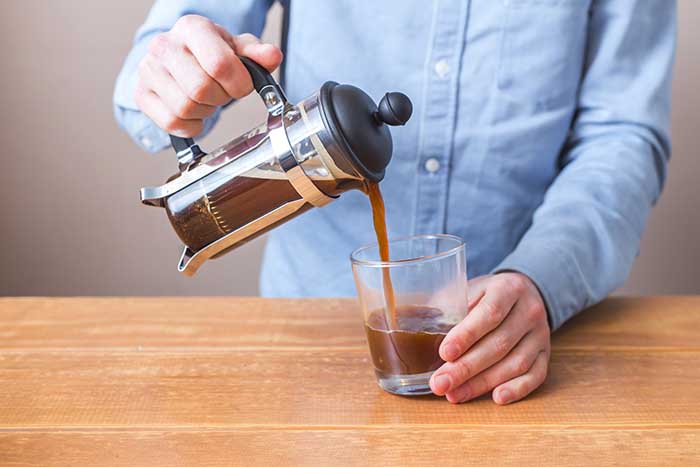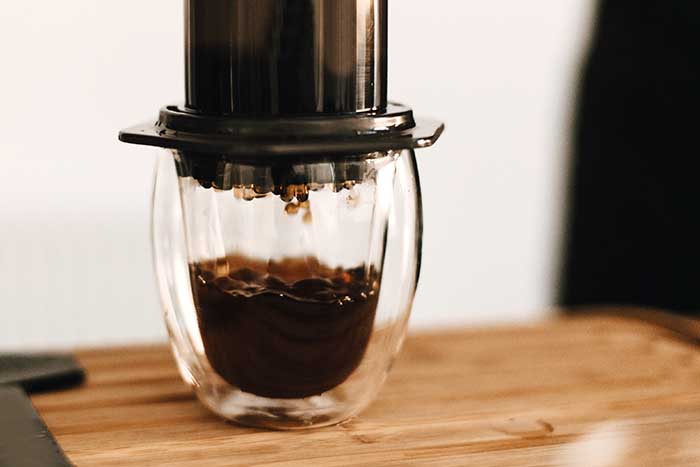Cleanliness is crucial to brewers and coffee makers of all kinds, whether it be a simple pour over or a more elaborate espresso setup. This is also true for Keurig coffee makers, where oils, coffee particles, and limescale can build up over time.
I recommend cleaning your brewer at least once a month to try to combat this, but there will inevitably be times where you need to do a deep clean to really rid the machine of limescale in particular.
What is Limescale?
This nasty buildup of calcium carbonate is a white-colored deposit that can often be found in kitchen appliances like kettles, coffee machines and dishwashers. It’s particularly common in areas with ‘hard’ water, which contains a greater concentration of calcium. This calcium is more soluble in hot water, which is why we tend to find limescale in appliances like kettles, dishwashers, and coffee machines.
It’s notoriously difficult to clean because it often creeps up in areas that are really hard to clean. Typically these are areas where hot water has evaporated in an enclosed space and then solidified. Wiping or scrubbing alone doesn’t fix the problem because it can be very stubborn to move. However, with the right liquid solution we can dissolve it quite effectively.
Regular Coffee Machine Maintenance
While a deep clean every one or two months will help reset your machine, it’s still important to do the basics on a very regular basis. This will help delay the onset of any significant limescale issues, but also help care for the mechanics of your machine. So at the very least always try to ensure that you:
- Remove the water reservoir.
- Remove the K-cup holder and the funnel.
- Remove the drip tray along with the drip tray cover.
- Clean all these external parts of the Keurig machine by using a towel, a dishwasher or all-purpose cleaner.
- Clean and remove any of the clogs around needles by using paper clips.
- Keep the reservoir void of water when it’s not being used.
Now time for the deep clean. There are three basic solutions that we have the choice of. These are:
- Descaling solution
- Vinegar
- Lemon juice
Along with these three, you will also need water, a wire brush, a towel, a paperclip, all-purpose clean
Here’s my breakdown of each of these three approaches:
#1. Vinegar
Attached the machine’s water reservoir and fill it up to the brim equally with one part vinegar and one part water. For the best results, use filtered water to ensure that there is as little bacteria as possible coming into the machine.
Place a mug on the machine’s stand, ready to serve into. Activate the machine for brewing without placing any K-cup or espresso capsule. The idea is what we want the water-vinegar solution to run through the machine without the use of any coffee.
Once the mug is full, empty it into the sink and then start the cycle again. Keep repeating this process until your water reservoir is empty and your vinegar-water mix is gone.
Thoroughly rinse out the reservoir either with dish soap or in your dishwasher. We want to get rid of any remnants of vinegar.
#2. Cleaning Keurig with Lemon Juice
With lemon juice, you’re still going to want a 1:1 ratio of lemon to water, so be sure to buy bottled lemon juice rather than trying to juice actual lemons yourself. You’ll be juicing for eternity, and bottled lemon juice isn’t too much of a heavy investment in reality.
#3. Cleaning Keurig with Descaling Solution
Finally, you can buy purpose-made descaling solution to clean your coffee machine. Ratios remain the same, with one part solution to one part water.
Of the three options, I’d always recommend going for descaling solution. It’s purpose-made for cleaning limescale, and is designed not to leave any residue once rinsed away. Vinegar can be prone to lingering after use, which could severely impact the taste of your coffee. In the case of lemon juice, it could prove to be impractical filling up half your water tank with lemon juice as an ongoing task.
I’d make the investment on getting something specially made for coffee cleaners. A lot of brand do produce their own, but truth be told they can be used almost interchangeably. Just make sure you abide by a 1:1 ratio of solution to water. Delonghi have one here, while there are non-brand specific ones like this also widely available from Amazon.


